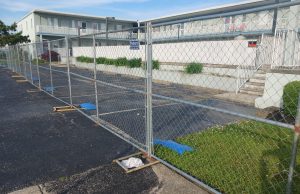The Internet of Things (IoT) has rapidly evolved from a buzzword into a transformative force in multiple industries. Among its many applications, IoT is revolutionising the way startups manage their physical workspaces. According to a report by McKinsey, the global market for IoT solutions is expected to grow to $1.6 trillion by 2025, with an annual growth rate of 16%. In the workplace, IoT devices are being deployed to improve efficiency and productivity, enhance safety and security, and reduce costs. Startups, in particular, are embracing IoT technology to gain a competitive edge and drive innovation in their operations. This article explores the various ways in which IoT devices are being leveraged by startups to optimize their operations, enhance workplace safety, and create more efficient and sustainable work environments.
How Startups Can Use IoT Devices To Boost Their Productivity?
Let’s demystify the multiple ways that startups can use IoT devices to optimise their business operations and profitability.
1. Remote Monitoring and Management
One of the key benefits of IoT in workspace management is remote monitoring and management. IoT devices such as sensors and cameras can be strategically placed throughout a workspace to collect data on various aspects of the environment, including temperature, humidity, air quality, and occupancy. This data can then be analyzed in real-time to identify trends and patterns, enabling startups to make informed decisions about space utilization, energy efficiency, and resource allocation.
Startups can utilize IoT-powered occupancy sensors to gain insights into how their workspace is being utilized. By collecting data on the occupancy rates of desks, meeting rooms, and common areas, they can optimize desk and room assignments, improve the layout of the workspace, and create more collaborative and productive work environments. For example, LightSense by Kontakt.io provides wireless occupancy sensors for efficient space utilization in smart buildings.
2. Energy Efficiency and Sustainability
IoT devices can also play a significant role in improving energy efficiency and sustainability in the workplace. Smart lighting systems, for example, can automatically adjust brightness levels based on occupancy and natural light, reducing energy consumption and lowering utility costs. Similarly, IoT-enabled HVAC systems can optimize heating and cooling based on occupancy and external weather conditions, further reducing energy usage and environmental impact.
3. Enhanced Safety and Security
IoT devices can enhance workplace safety and security by providing real-time monitoring and alerts. Smart security cameras, for example, can detect and alert employees to potential hazards or intruders. IoT-enabled access control systems can also provide secure and convenient entry and exit for employees, contractors, and visitors. Additionally, wearable IoT devices, such as smartwatches or badges, can track employees’ locations and health metrics, providing valuable data for workplace safety protocols. Cryptocurrency and the Internet of Things (IoT) potentially improve efficiency, security, and trust across a range of industries. The underlying technology of cryptocurrencies, blockchain, offers the potential to solve traceability issues and security flaws in Internet of Things networks.
4. Data-Driven Decision-Making
Do you know that automation can help make powerful decisions? Yes, automation has done wonders in automating the complex business procedures, for example, in trading, auto trading platforms such as Bitcoin Billionaire have undoubtedly helped traders in making informed decisions about buying/selling decisions of their assets by providing them real-time data about market dynamics. IoT devices also use automation in workspace management and enable startups to make data-driven decisions. By collecting and analyzing data on various aspects of the workspace, startups can identify inefficiencies, improve resource allocation, and create more productive and sustainable work environments. This data-driven approach not only benefits startups’ bottom lines but also enhances employee satisfaction and engagement.
5. Asset Tracking and Inventory Management:
Startups can use IoT devices, such as RFID tags or Bluetooth beacons, to track the location and status of their physical assets in real-time. This enables them to optimize asset utilization, reduce loss or theft, and improve inventory management. For example, AirFinder by Link Labs is a real-time location system that uses IoT to track assets accurately in large spaces.
6. Predictive Maintenance
IoT-enabled sensors can be installed on equipment and machinery to monitor performance metrics such as temperature, vibration, and energy consumption. By analyzing this data, startups can predict when maintenance or repairs are needed, minimizing downtime and extending the lifespan of their assets. For example, Flutura’s Cerebra AIOT platform helps in the predictive maintenance of industrial equipment.
7. Supply Chain Visibility
IoT devices can be integrated into supply chain processes to provide real-time visibility into the movement and status of goods. This allows startups to track shipments, optimize routes, and improve overall supply chain efficiency. For example, SenseIT by Biarri provides IoT solutions for supply chain visibility and real-time monitoring.
8. Fleet Management
Startups that rely on a fleet of vehicles for their operations can use IoT-enabled telematics devices to monitor vehicle location, speed, fuel consumption, and driver behaviour. This enables them to optimize routes, reduce fuel costs, and ensure compliance with safety regulations. For example, Samsara provides a comprehensive fleet management solution using IoT.
9. Environmental Monitoring
IoT sensors can be used to monitor environmental conditions such as air quality, temperature, and humidity in the workplace. This enables startups to create a more comfortable and healthy work environment for their employees, leading to increased productivity and well-being. For example, Particle provides environmental monitoring and sensing solutions using IoT.
10. Customer Experience:
In retail or service-based startups, IoT devices can be used to enhance the customer experience. For example, smart mirrors in fitting rooms can provide product recommendations based on the customer’s preferences or allow them to request assistance from a sales associate. For example, Oak Labs provides smart mirror solutions using IoT for an enhanced shopping experience.
11. Compliance and Regulatory Requirements
For startups operating in highly regulated industries, IoT devices can help ensure compliance with industry standards and regulatory requirements. For example, in healthcare, IoT devices can be used to monitor patient health and safety, ensuring compliance with HIPAA regulations. For example, Capsule Technologies provides medical device connectivity solutions using IoT to ensure compliance.
12. Employee Well-being
IoT devices can also be used to monitor employee health and well-being. For example, wearable devices can track employee activity levels, stress levels, and sleep quality, providing valuable insights into employee wellness and productivity. For example, Fitbit provides wearable fitness trackers using IoT for employee wellness programs.
Conclusion
No doubt, IoT devices are transforming the way startups manage their physical workspaces. By enabling remote monitoring and management, optimizing occupancy, improving energy efficiency and sustainability, enhancing safety and security, and enabling data-driven decision-making, IoT devices are helping startups create more efficient, productive, and sustainable work environments. As IoT technology continues to evolve, the potential for innovation in workspace management will only continue to grow, driving even greater efficiency and effectiveness in the workplace. With startups leading the charge in IoT adoption, the future of workspace management is bright, offering exciting possibilities for improved productivity, enhanced safety, and a more sustainable future.







